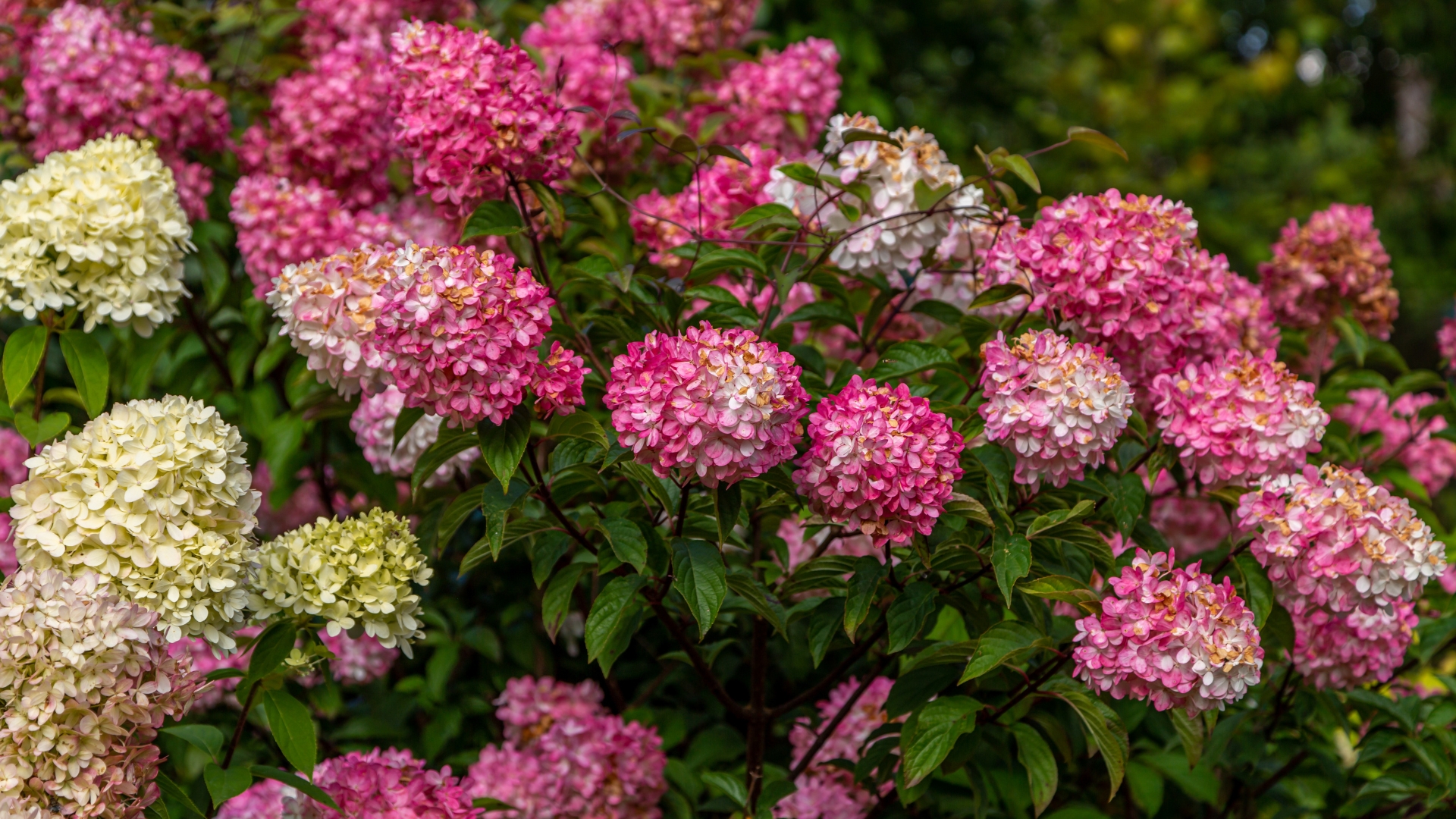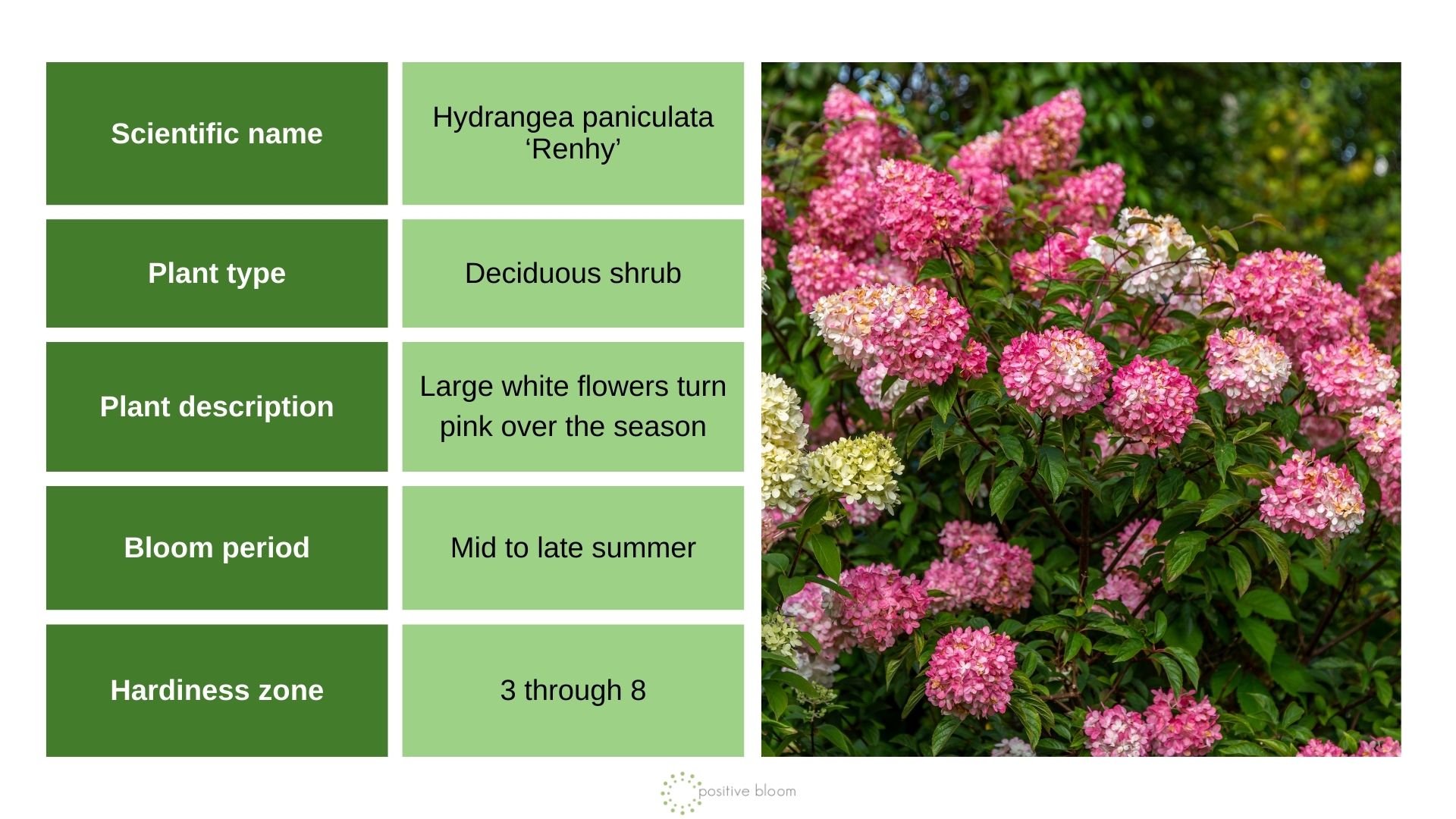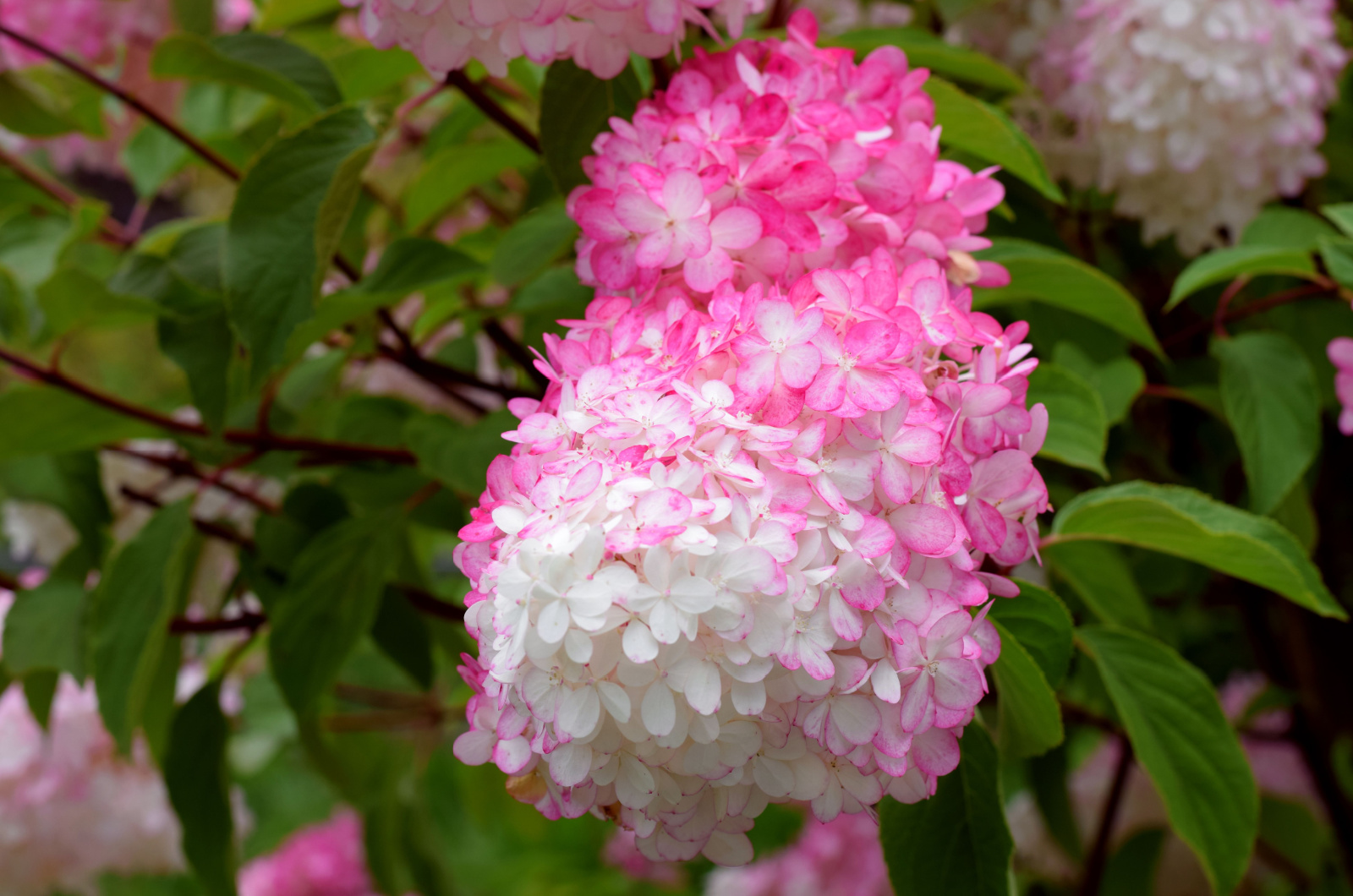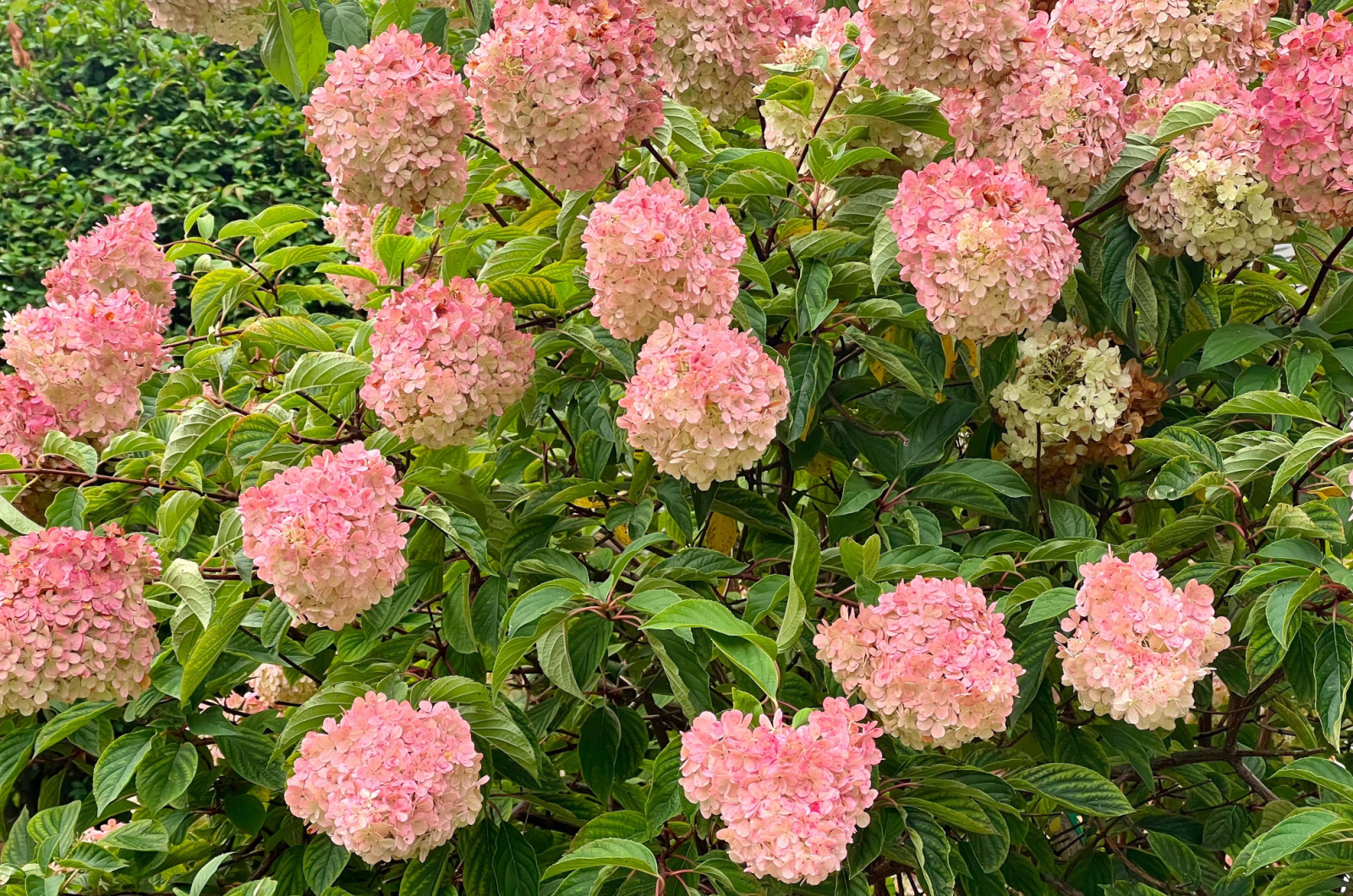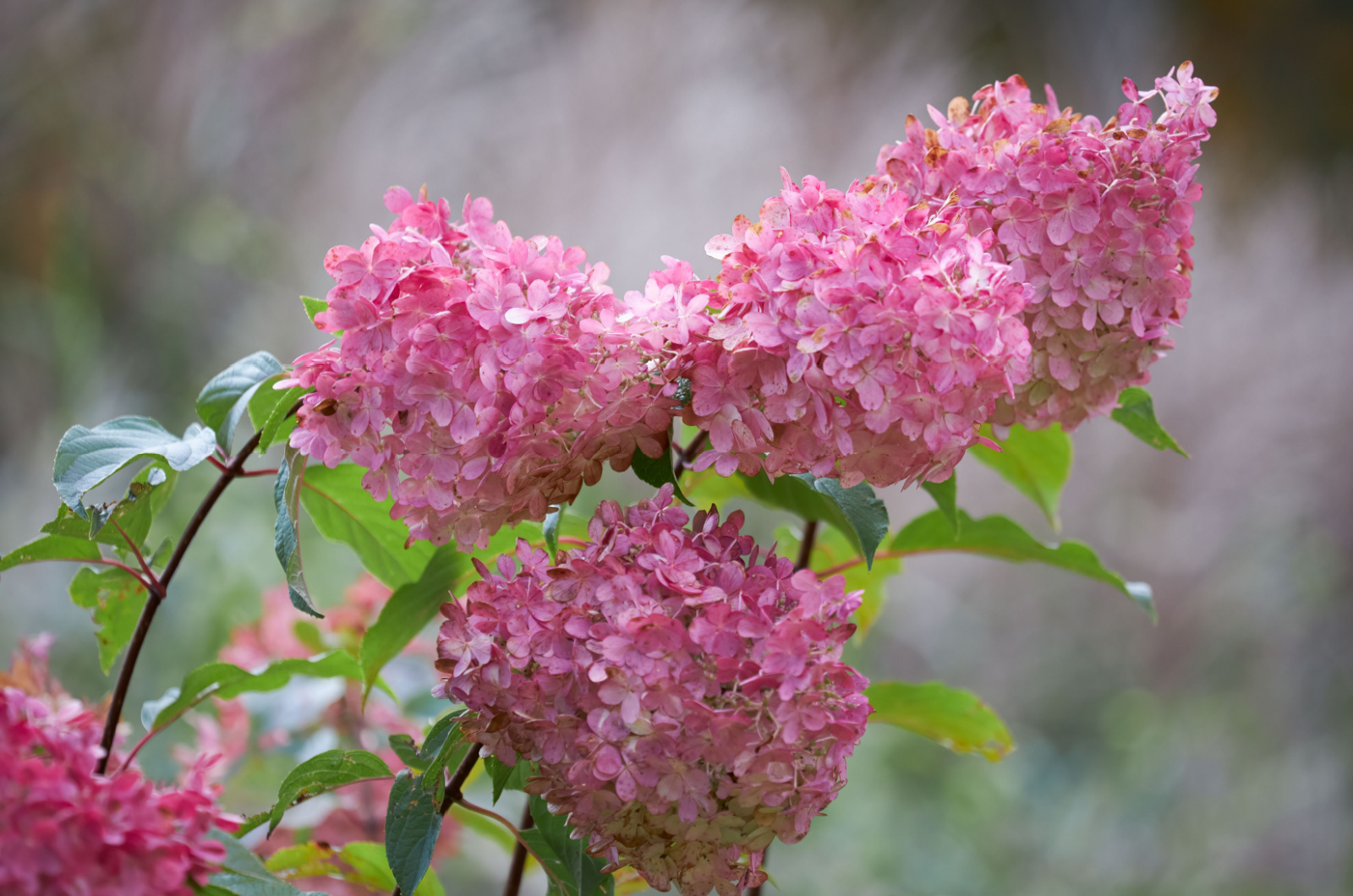If you want to add soft colors into your shaded garden, then a Strawberry Vanilla hydrangea is the perfect choice for you!
This easy-to-grow deciduous shrub produces large white flowers that turn pink over time, adorning your garden with a delicate flower display and attracting numerous beneficial insects to it.
In this article, we are going to share some information about this unique hydrangea cultivar. Let’s learn how to grow and care for a Strawberry Vanilla hydrangea!
More About Strawberry Vanilla Hydrangea
This might be useful: How To Change Hydrangea Colors For A Gorgeous Flower Display
How To Grow Strawberry Vanilla Hydrangea
Taking care of hydrangeas is relatively easy, and the Strawberry Vanilla hydrangea is no exception. Moist, but well-draining soil and a little bit of sun will keep these plants happy and thriving.
Stay tuned for more information about the hydrangea plant care guide!
Soil Requirements
Growing your Strawberry vanilla hydrangea in a well-draining soil that is slightly acidic to neutral is the best way to keep this plant healthy. It’s important that the soil retains moisture but still doesn’t get overly saturated because hydrangeas are prone to root rot.
Light Requirements
These deciduous shrubs can adapt to full sun exposure, although they might need some afternoon shade if you live in particularly hot climates. Hydrangeas are ideal shrubs for shaded gardens!
Water Requirements
Regularly watering your hydrangeas will keep them well-hydrated, especially during periods of drought. You should ensure that the soil is consistently moist but not soggy – soggy soil leads to root rot.
Related: How To Revive Wilted And Drooping Hydrangeas (Pro Tips)
Fertilizer Requirements
Strawberry Vanilla hydrangeas benefit from some balanced, slow-release fertilizer. Apply it in early spring to boost new growth and vibrant flowers. Carefully follow the instructions on the packaging so you don’t overfertilize your hydrangeas.
Related: Get The Most Out Of Your Hydrangeas With These Fertilization Tips
Temperature Requirements
Hydrangeas can adapt well to moderate temperatures. Extreme cold or heat can stress them out, so make sure to protect them in severe weather conditions. You don’t even have to worry about humidity, but you can add a layer of mulch to help with soil retention.
Propagation
Interestingly, it is prohibited to propagate Strawberry Vanilla hydrangeas because it is a copyrighted and trademarked cultivar. It’s best to buy this unique cultivar from a licensed nursery or garden center.
Pruning
The best time to propagate this shrub is from late winter to early spring, before the new growth starts. If you’ve trained it to grow as a small tree, you can remove the lower sprouts and trim the canopy.
This might be useful: When And How To Prune Annabelle Hydrangeas
Potting
If you don’t have enough garden space for a large hydrangea shrub, you can always try and grow it in a container. A large wooden or plastic container with drainage holes will make a great home for your Strawberry Vanilla hydrangea, just make sure to use the right potting mix!
Related: How To Grow Hydrangeas In A Pot
Common Problems
Although hydrangea shrubs are super easy to grow, you should still be on the lookout for pests and diseases. To prevent common diseases, ensure proper air circulation. If you spot any pests, treat them with neem oil or insecticides.
Other pests like rabbits and deer are also fond of hydrangeas, so make sure to provide protection from these as well!
We’ve already mentioned overwatering – yellow leaves are often signs of overwatered hydrangeas. However, this issue can arise due to low light conditions. Take good care of your Strawberry Vanilla hydrangeas to avoid these problems.
This might be useful: 7 Pests That Can Completely Ruin Your Hydrangeas

